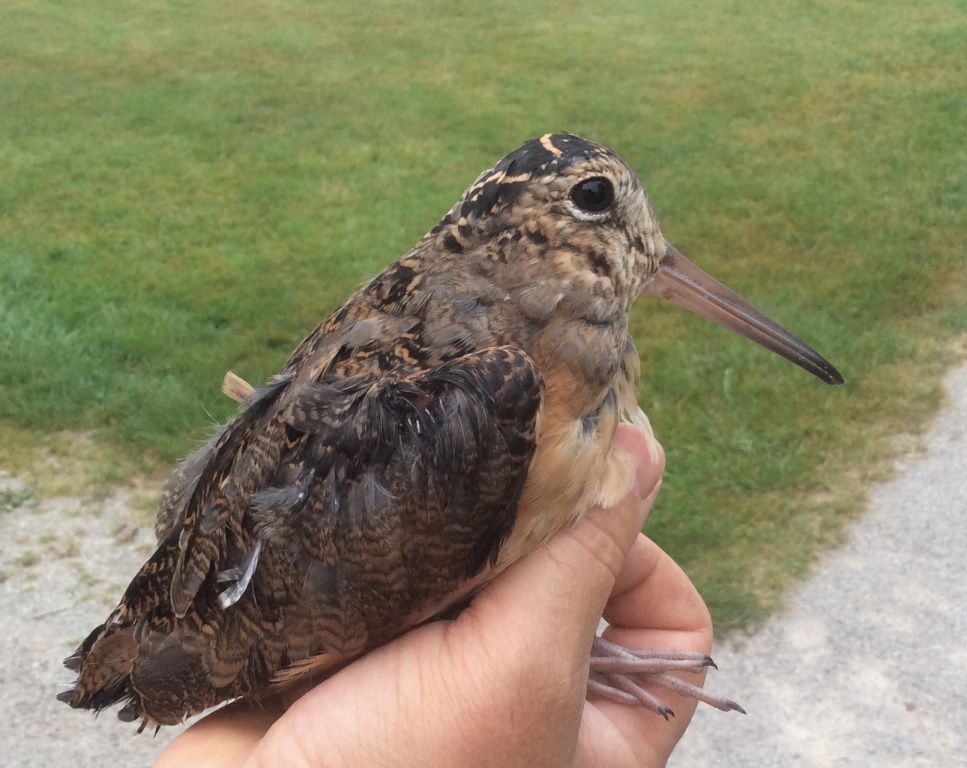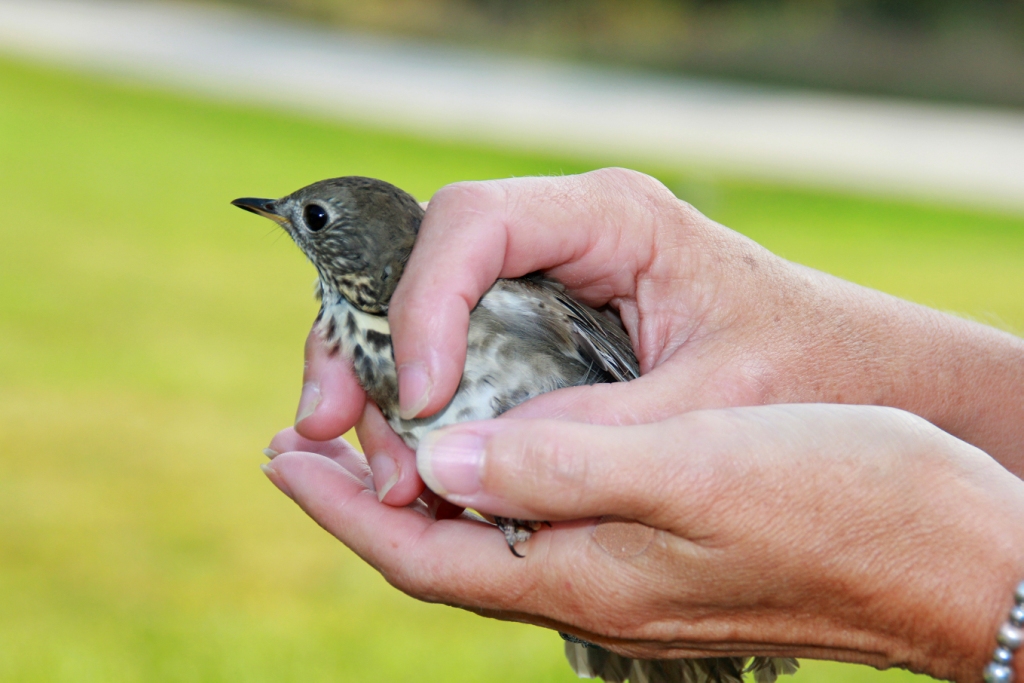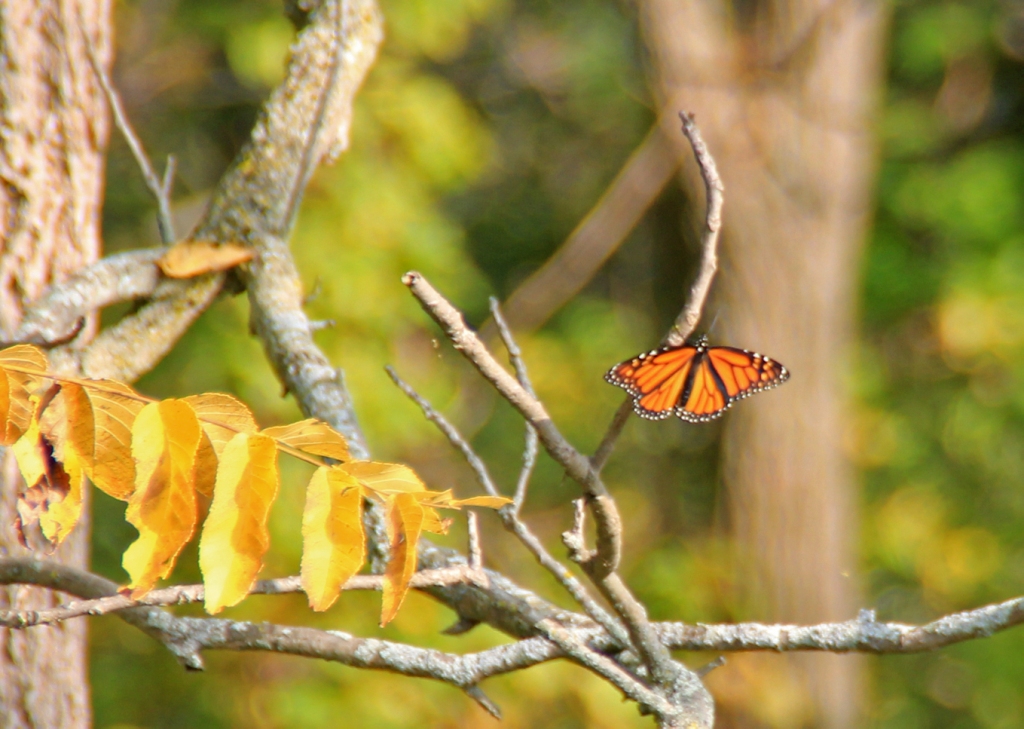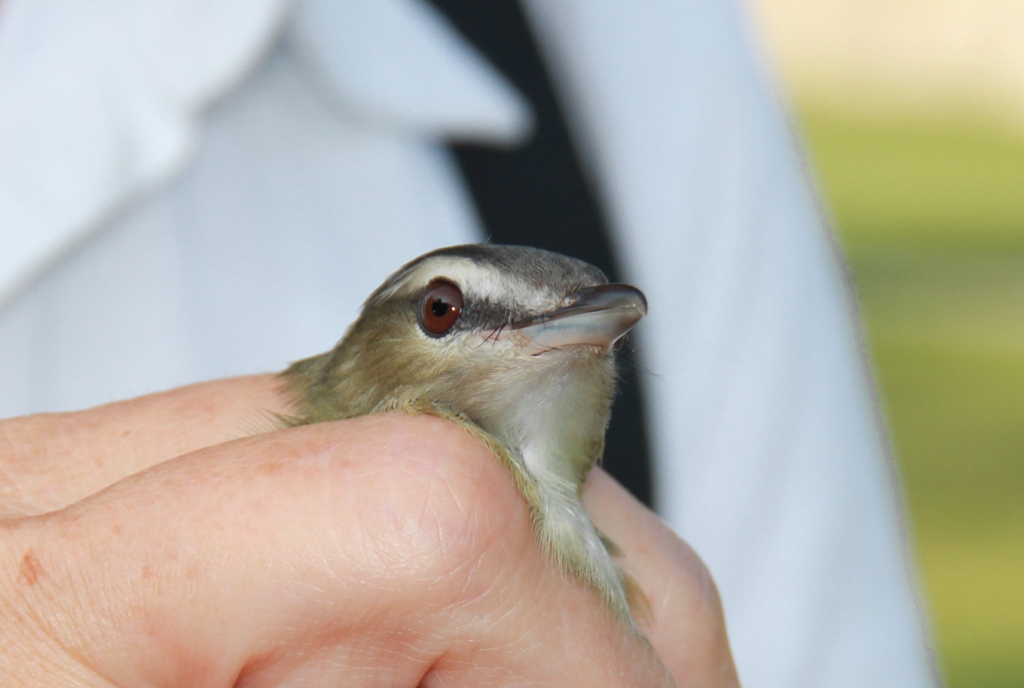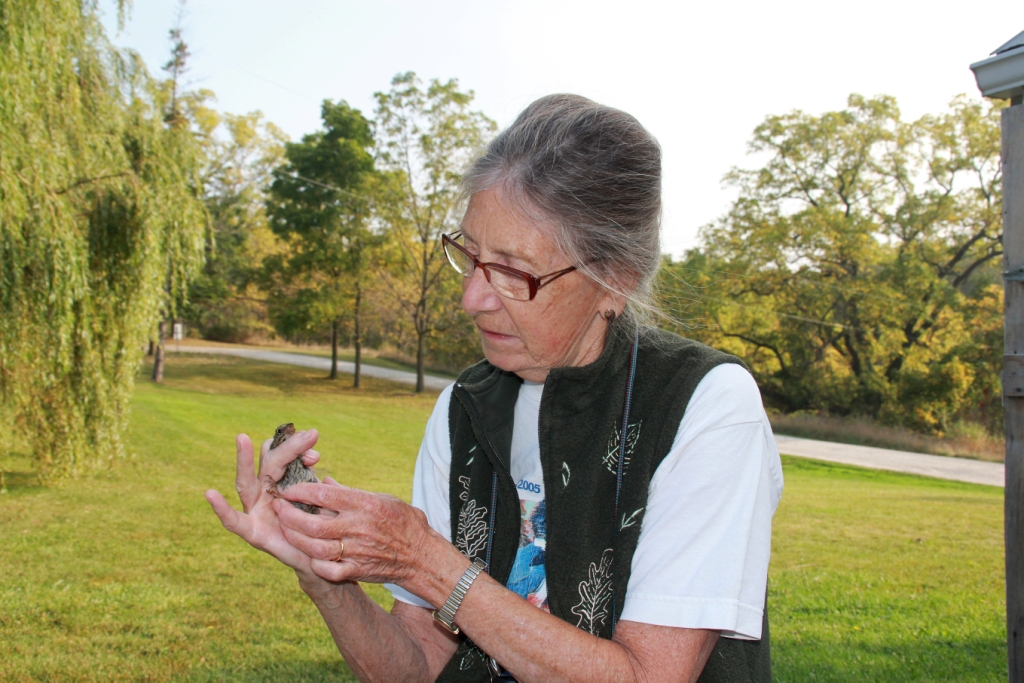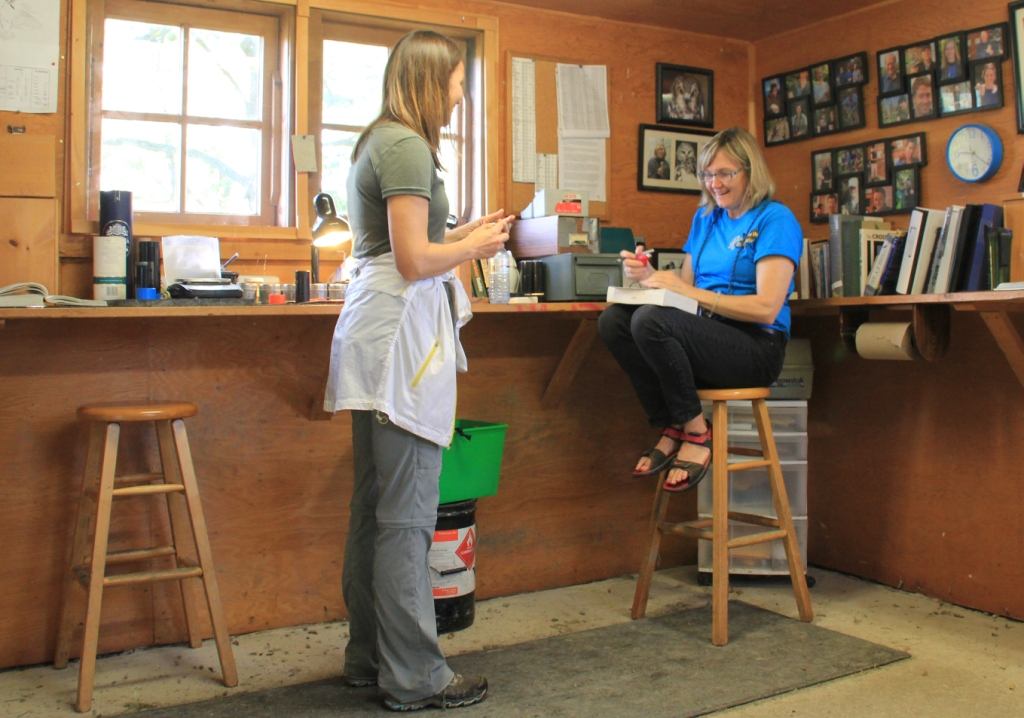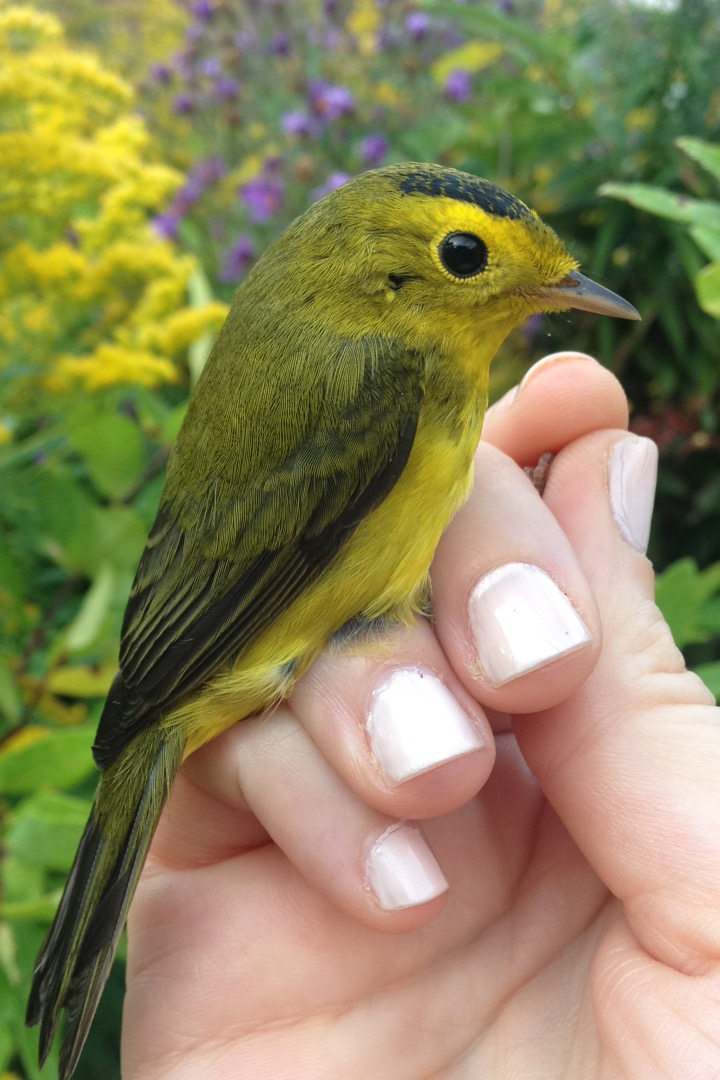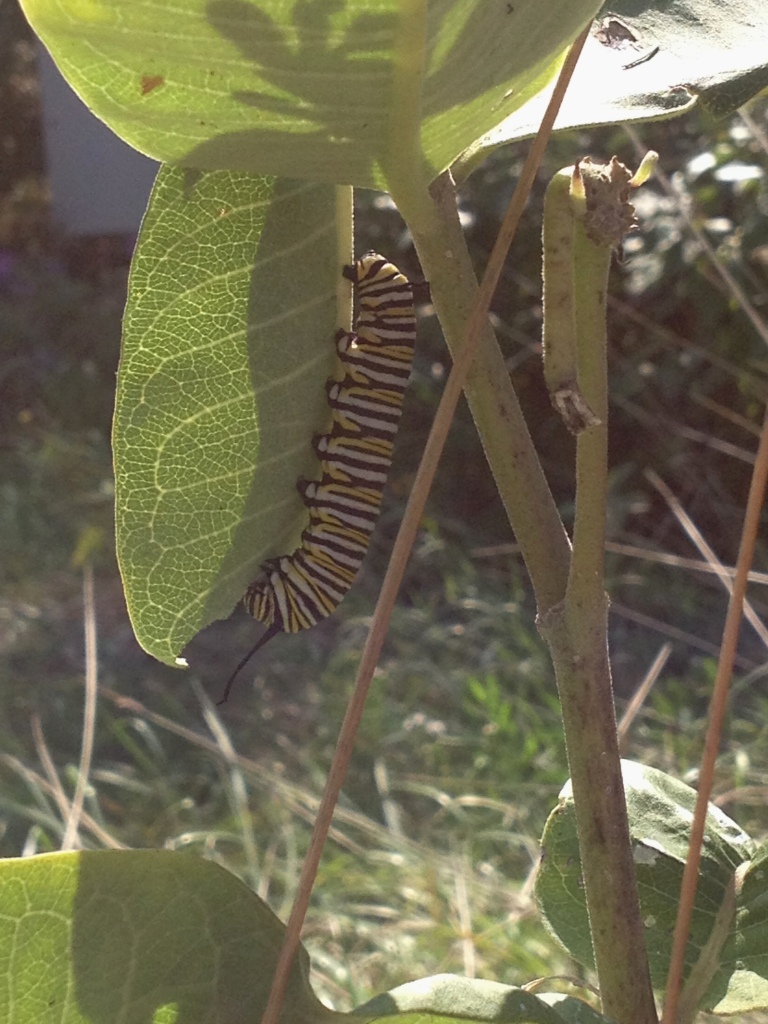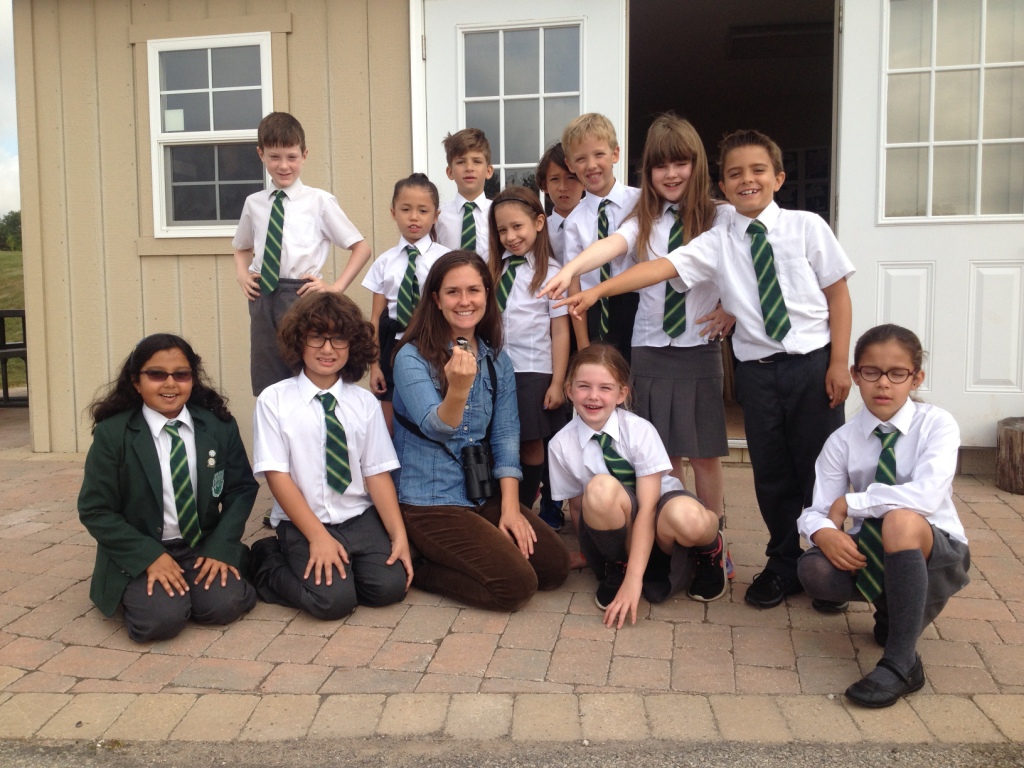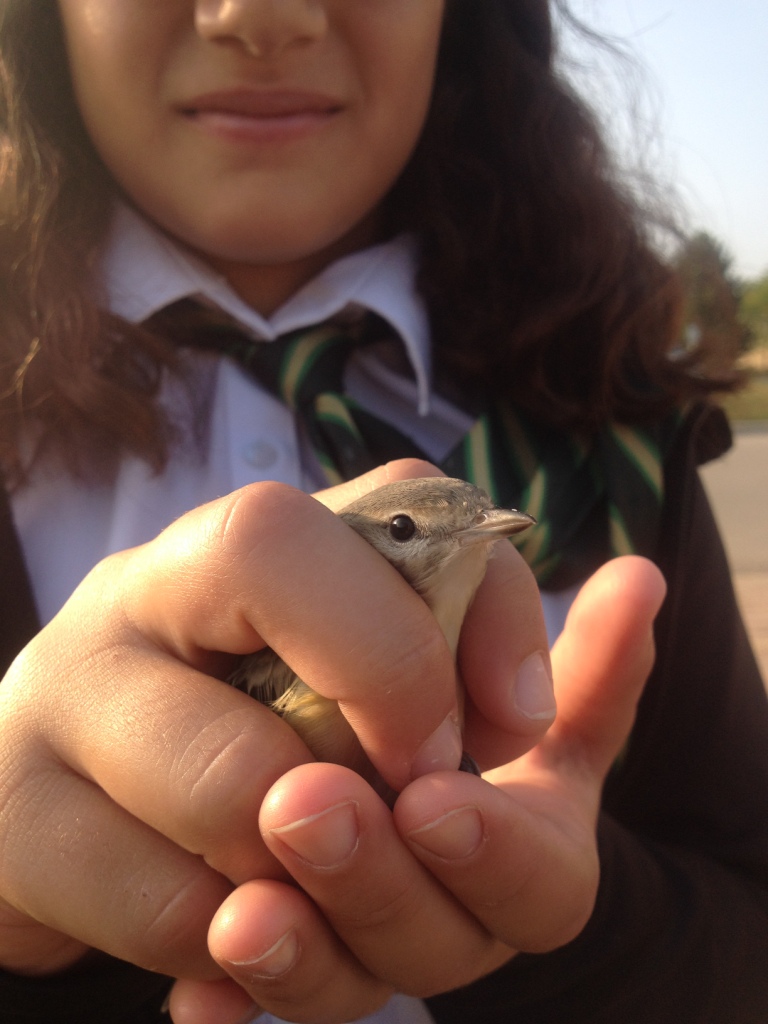Sailing vessels heading from the northern hemisphere to the southern one had to get past the doldrums – an area that runs approximately 5 degrees north and south of the equator. The area is renown for a lack of wind; ships could be stuck for up to weeks at a time. I always wondered what it must have felt like to be a mariner stuck there, searching the horizon for any sign of wind or change in the weather that might presage wind to take me out of the this hell…..
Well, I now have a bit of an idea. Day after day it’s been hot, humid and windless and there’s no end in sight evidently. A lot of folks are enjoying this late Summer – even though the first day of Fall comes tomorrow! I’m not. I like cool (even cold) temperatures and autumn winds. I also like the birds that more seasonal conditions push down from the north. In these two days we have caught few migrants. We should be at the “transition time”: when the long-distance migrants have passed through and their place is taken by short-distance fliers: Hermit Thrushes, kinglets, Yellow-rumped Warblers, sparrows. The long-distance bird numbers are waning but we haven’t seen the other species filling in yet (except for a very early kinglet we got a couple of days ago).
We’re seeing some interesting physiological changes in some of the birds we’re retrapping. Most that stay at Ruthven have been fattening up, acquiring the fuel they’ll need for another push. The most dramatic change was in a Red-eyed Vireo that we banded 8 days ago. Then, it weight 18.0 grams. This time it weighed 26.5 grams – an increase of 8.5 grams or just over 1 gram per day. That’s an increase of about 47% over its original weight! In human terms: if you weighed 80 kilos you would end up at about 118 kilos in just over a week. Try running a few hundred kilometers carrying that load!
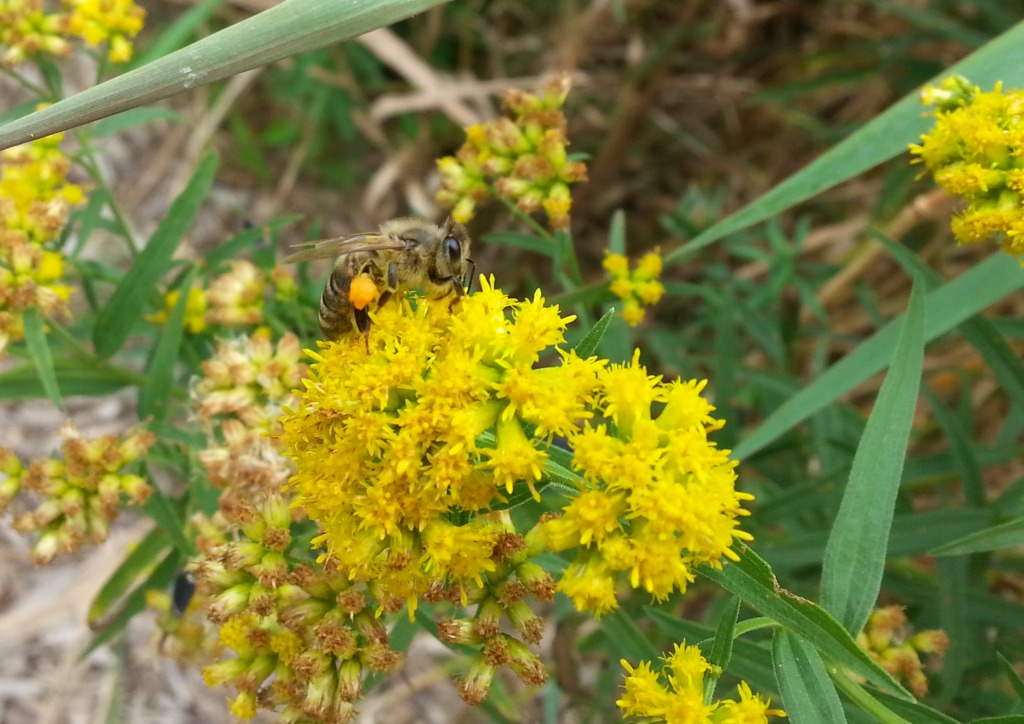
Bees are getting ready for the end of Summer – note the full pollen sacs on this insect’s legs. Asters and goldenrods are such important food plants for bees and butterflies at this time of year. -NRF
September 19th; Banded 21:
2 House Wrens
2 Swainson’s Thrushes
2 Gray Catbirds
2 Philadelphia Vireos
3 Red-eyed Vireos
1 Nashville Warbler
1 Chestnut-sided Warbler
2 Magnolia Warblers
1 Black-throated Green Warbler
1 Bay-breasted Warbler
2 Blackpoll Warblers
1 Black and White Warbler
1 Common Yellowthroat
ET’s: 43 spp.
September 20th; Banded 18:
1 American Woodcock
1 Gray-cheeked Thrush
7 Gray Catbirds
1 Cedar Waxwing
1 Warbling Vireo
1 Red-eyed Vireo
1 Black-throated Blue Warbler
1 Bay-breasted Warbler
1 Blackpoll Warbler
1 American Redstart
1 Common Yellowthroat
1 Song Sparrow
ET’s: 44 spp.
Photos:
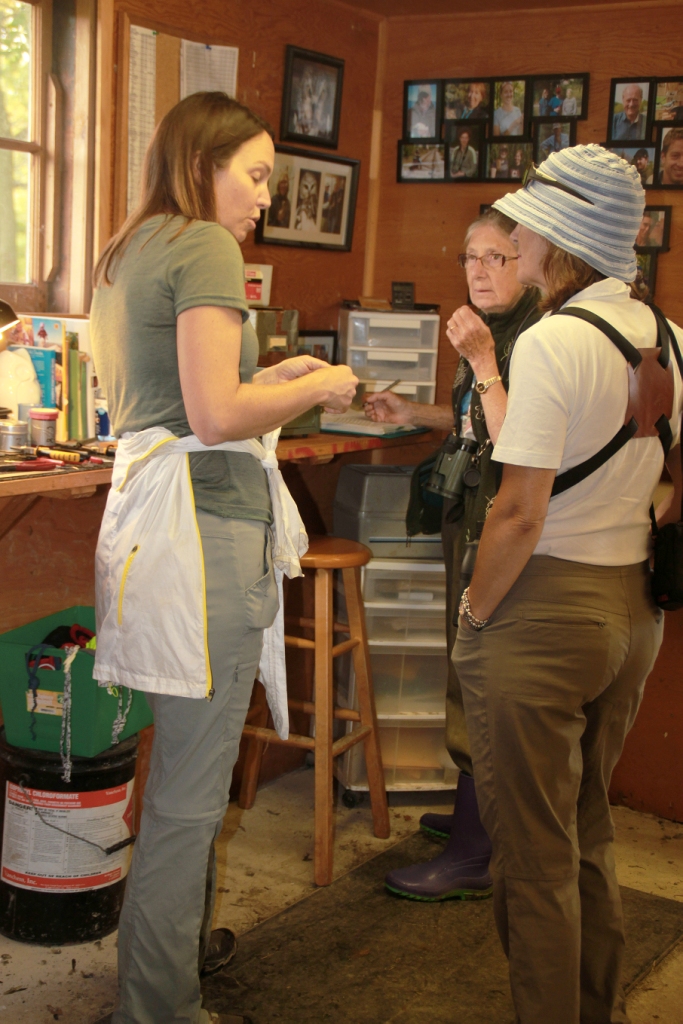
Joanne, Elaine and Mary Ellen sharing a moment. Joanne is very good at sharing moments. -J. Eberspaecher
We had a beautiful day at Fern Hill Burlington. We banded a total of 10 birds and observed an estimated total of 27 species.
We banded 10:
3 Black capped chickadees
3 Grey Catbirds
1 Warbling Vireo
1 Wilson’s Warbler
1 Eastern Towhee
1 Song Sparrow
I was very excited (and admittedly jealous) to hear that Janice observed a Connecticut Warbler during the morning while I was gathering the kindergarten class …no fair! The kiddos were just as impressed and enthralled to release a re-trapped American Robin as the older group of Young Ornithologists were to look up the Connecticut Warbler in the field guide and absorb Janice’s interesting facts and field observations of such an elusive bird.
Monarch butterflies have been on the move across the Burlington campus as well, but not in the numbers Rick and I observed in Oakville on Monday. We did however find a gorgeous monarch caterpillar that we will be observing and learning about as it embarks on it’s seemingly magical metamorphosis.
Photos:
Katherine

